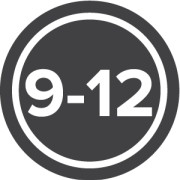
Road to the Constitution
How did we go from thirteen British colonies to the United States of America? Explore the major hardships of life under British rule, why some colonists decided to break away, and how they set a path for a new and independent government.
Topics at a Glance: colonization | colonial government | American Revolution | Constitutional Convention | America’s founding documents | Articles of Confederation | Declaration of Independence | constitutional influences | introduction to the Constitution | ratification of the Constitution
-
DBQuest
America's Founding Preambles
-
DBQuest
The Constitution's Cover Letter
-
Lesson Plan
Colonial Beginnings
-
Lesson Plan
Separate and Sovereign
-
Lesson Plan
Got Grievances?
-
Lesson Plan
Trying Self Government
-
Lesson Plan
Major Clash? Compromise!
-
DBQuest
America's Founding Preambles
-
DBQuest
The Constitution's Cover Letter
-
Game
Race to Ratify













